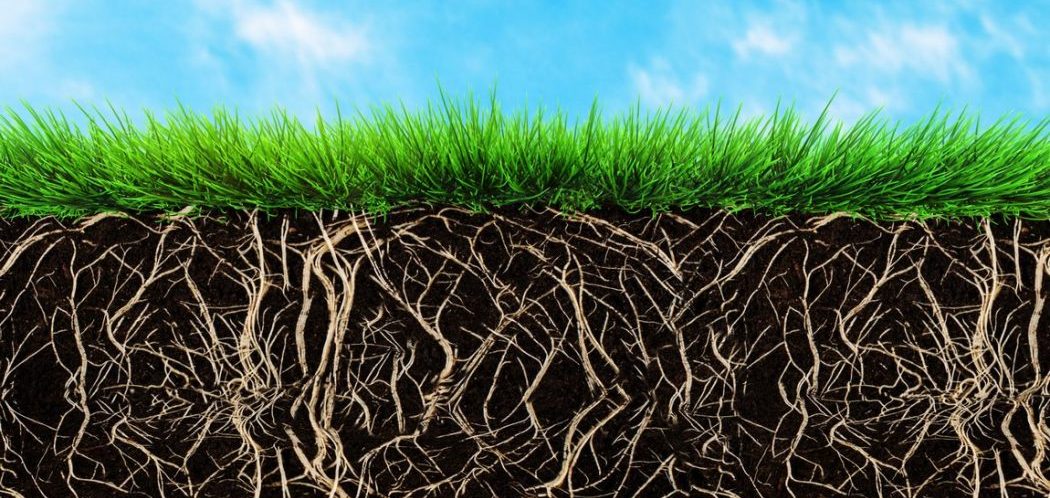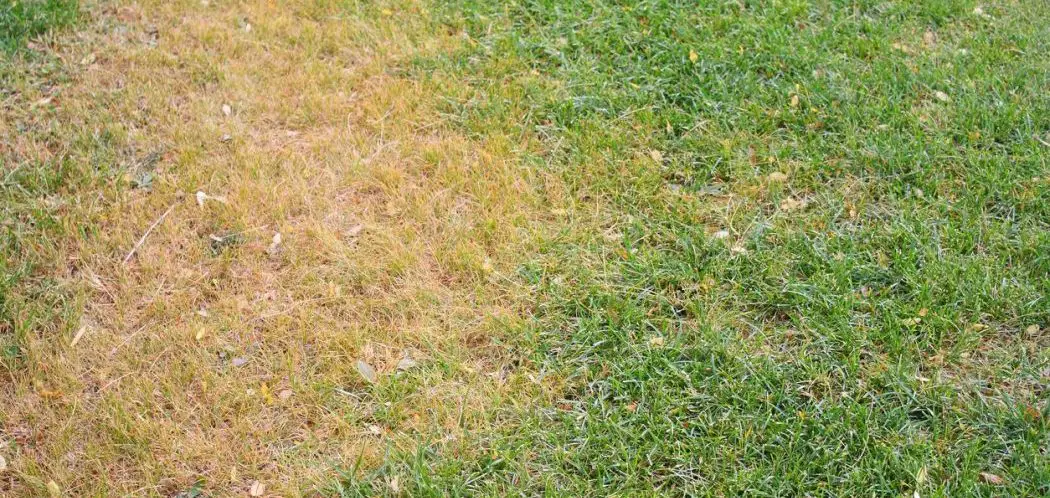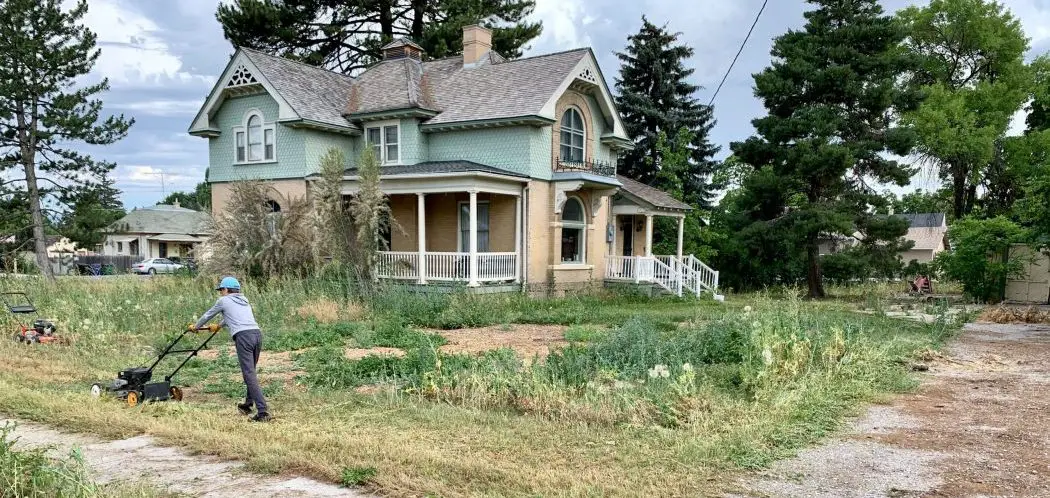The root system under the surface of the lawn is one of the most important parts of it. If you have shallow roots, you will notice that your lawn is thin and lacks the lush green quality that you might desire.
The roots are critical because they take in nutrients and water to help the grass stay healthy and grow, and when you have shallow roots, it is difficult for your grass to get what it needs. However, you can manage your root system so that your lawn can thrive.
What Causes a Shallow Root System?
Shallow root systems are caused by different factors such as compaction, thatch buildup, and poor cutting practices.
Let’s take a closer look at these…
Thatch
Thatch is a collection of debris that accumulates between the blades of grass and the soil, and it can thin out your grass.
It can become so thick that it prevents water and nutrients from reaching the roots. The grass roots will begin growing upwards in search of water and nutrients, which leads to a shallow root system.

Cutting Practices
You can also end up with shallow roots by cutting your grass in particular ways. For instance, your mower needs to be set at the ideal height to promote growth. You also need to make sure that your blades are sharp so that you can cut the grass evenly.
Grass that is too short, too long, or too thick will prevent your roots from receiving the nutrients it needs. If you cut long grass and leave the clippings on the ground, it will lead to a buildup of thatch, which can cause your shallow roots.
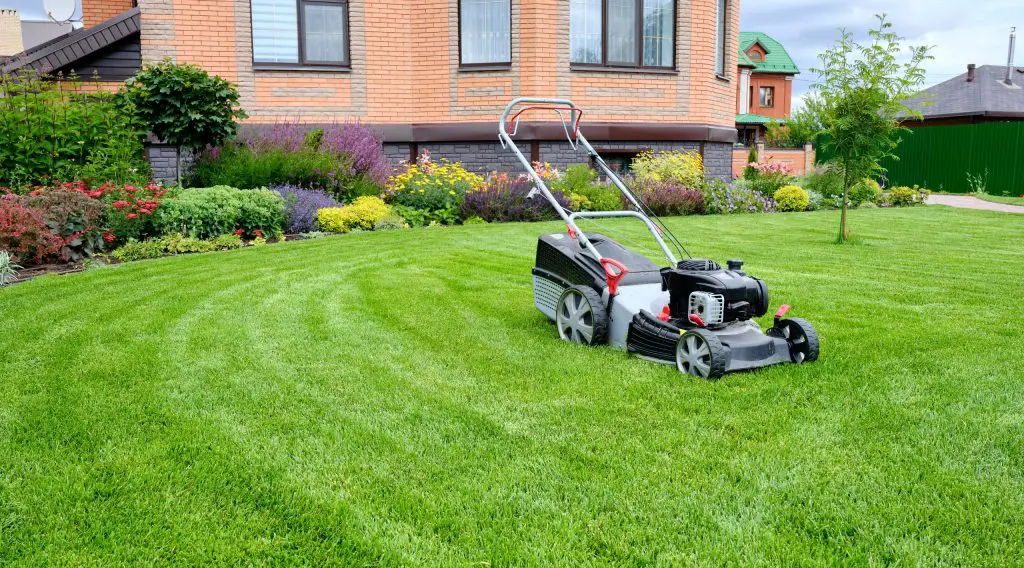
Compaction
Finally, compaction of the soil can also starve the roots, which leads to a shallow root system. This can happen over time, and the roots are unable to grow freely and receive the air they need.
You will want to take steps to expand the soil so that the roots can receive air, nutrients, and water.
Symptoms of Shallow Grass Roots
There are different symptoms that will let you know that you might have shallow grass roots.
Discoloration
Your lawn might appear blotchy with patches of brown grass. You might see thin patches of grass as well. It might look as though it hasn’t been watered, even if there has been a lot of rain lately.
Spongy Under Foot
Another sign that you might have shallow grass roots is that the grass feels spongy and squishy to walk on. This is actually a sign of thatch, which is known to lead to shallow grass roots.
Your grass might be impacted more severely by changes in temperature during hot or cold weather times.
Ripped Grass Blades
When you mow the grass, you may find that the mower rips it out rather than cutting the blades of grass. This happens when you have shallow roots because the grass isn’t planted firmly in the ground.
No matter what is causing your roots to be too shallow, there are signs that will show you that you need to do some maintenance so that your roots have a healthy environment where they can receive the nutrients and water they need to produce a lush, green lawn.
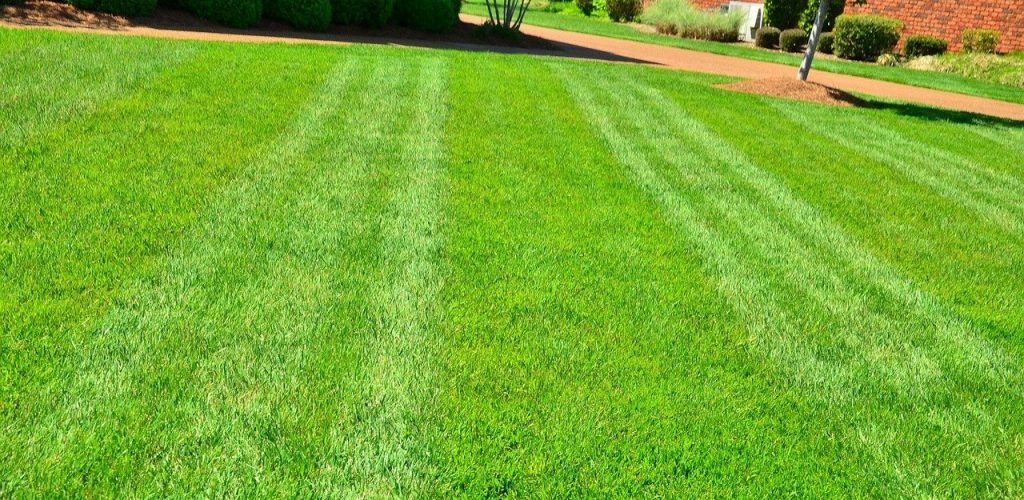
Root Systems of Different Grass Types
Warm-season grasses and cool-season grasses are two categories that include grasses that thrive in these temperatures.
Both systems decrease their root growth when they are dormant, so warm-season grasses are dormant over the winter, while cool-season grasses are dormant in the winter and the middle of the summer. This is the time that they can lose roots. The roots are very important because they absorb nutrients, water, and allow the plants to grow and thrive.
Warm-Season Grasses
Generally speaking, warm-season grasses grow from June through early September, while cool-season grasses grow in the spring and fall when the soil and air temperatures are cooler.
When it comes to their root systems, warm-season grasses generally have a great deal of top growth, and they have root systems that are more extensive than cool-season grasses. They produce more biomass, which allows them to take in greater amounts of nutrients and water.
Cool-Season Grasses
Cool-season grasses do receive nutrients and water when warm-season grasses are dormant in the spring and fall.
How to Develop a Deep Root System
You can encourage your grass roots to grow into a deeper system. You need to keep an eye on it and pay attention to its depth and distribution. Make sure that you understand how it changes at different times of the year.
Pay attention to each of the following care routines for maximum root growth.
Proper Watering
Water is critical to root development in all grasses. All plants need water for photosynthesis, and water helps the grass to survive and function at its best. If you don’t have sufficient rainfall, you need to remember that shallow infrequent watering leads to shallow roots for all grasses.
You will want to water the grass less frequently, but make sure that the water soaks deep into the soil. It should go down at least four to six inches below the surface. When you create an environment that is conducive to root growth so deep down, the roots will grow and extend downward. The key is to maintain the moisture because once it dries, the roots will start growing upward again.
You should water early in the morning when it is hot outside so that the water has a chance to soak into the soil before it evaporates. In addition, note that when it is cooler outside, you can water less frequently. You don’t want to overwater your grass either.
Interested in learning more about when to water your grass?
I’ve written a full guide that includes everyhting you need to know. Click here!
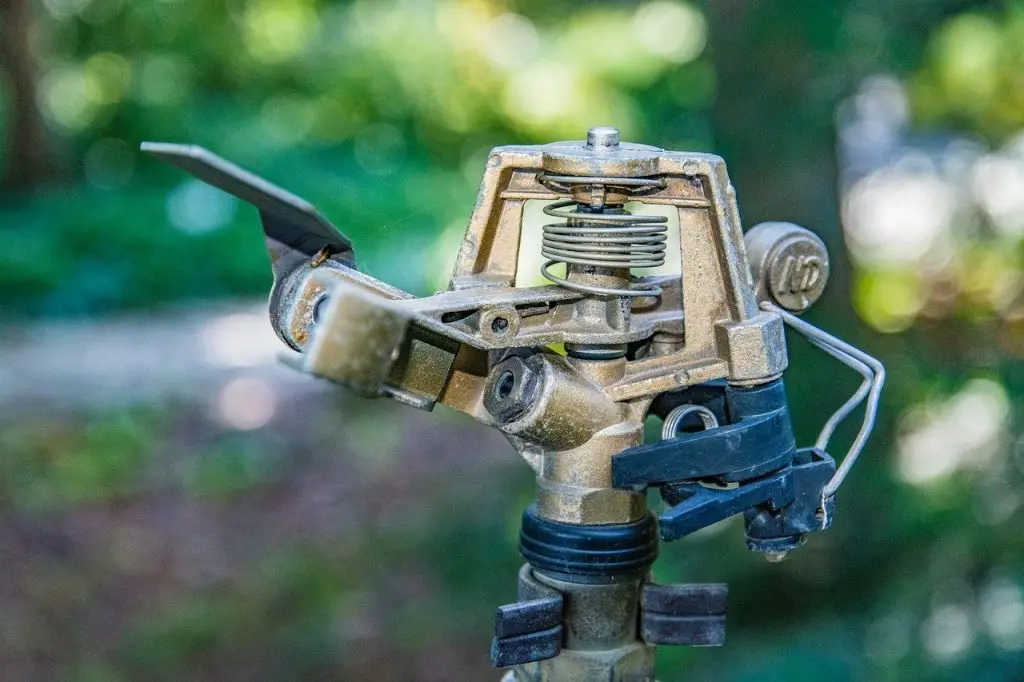
Improve Soil Condition
You should also consider the condition of your soil when you are looking at the depth of your grass roots. If you have heavy clay soil, it compacts easily and can become waterlogged. You will want to use compost and other organic matter to keep the soil free of compaction so that your grass roots can thrive.
If your soil is sandy, it won’t retain water at all. In this case, you should use organic matter to provide nutrients for your grass and increase the soil’s ability to retain water. You might need to create a mix of organic matter and soil in the top six inches of soil if it is too sandy. Pay attention to your soil condition to determine the best way to promote healthy root growth.
I use this soil test kit from Amazon to get an idea of what my soil needs each year. It’s then easy to work out what you need to give your lawn so that it can thrive.
Mow at an Appropriate Height
Another factor that will impact the development of your root system is the mowing height you choose. There is a direct correlation between the height of the grass and the depth of the roots.
Generally speaking, when you leave the grass taller, the roots will grow deeper. The mowing height does not mean that you should let your grass grow long and then cut it. It means that you leave the grass at a longer height and cut it regularly to maintain that height.
You can also cut your grass too low, which will lead to shallow root growth. Your grass will not be able to handle heat stress as well if it is cut too short, and it encourages the roots to stop growing. You should cut your grass at a length that is ideal for promoting deep root development across the entire lawn.
Interested in learning more about the proper mowing height?
I’ve written a full article that details how low you should mow. Click here to check it out!
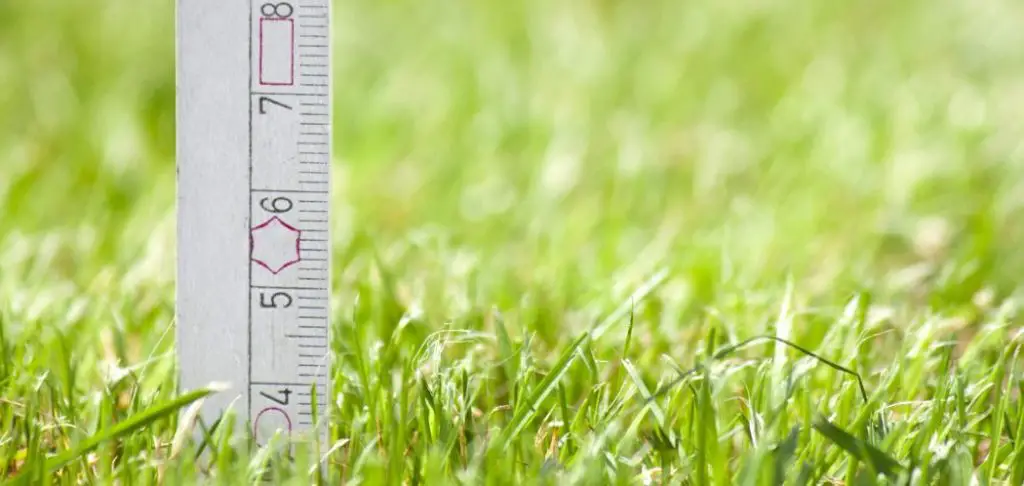
Fertilizing
Fertilizer feeds your grass the nutrients it needs, and it can help to promote the growth of your grass roots. The slow-release fertilizers are ideal for promoting root growth because they distribute the nutrients over time rather than infusing them all at once.
When you fertilize your grass, you need to water it to prevent the blades from burning. The more you understand how the grass roots grow, the more you will be able to encourage your grass to develop a deep root system.
Dethatching
Dethatching is done to remove the layer of dead roots and grass from your lawn to allow more water and nutrients to get down into the soil.
It can be done a couple of ways. The most popular tool for dethatching is a dethatching machine which has tines that spin around and rip out the thatch.
For smaller areas, it’s useful to use a dethatching rake. This is a special type of raking designed specifically for removing thatch. While these are super effective, it’s pretty exhausting to cover a large area with one of these.
I prefer to use this 14-inch corded dethatcher from Greenworks (link to Amazon). It’s a very popular model and goes for a very reasonable price.
Want to learn more about dethatching?
I’ve written a full article that details everything you need to know about dethatching your lawn. Click here to check it out!
Here are some of my favorite lawn care products
Thanks a lot for making it to the end of this post! I hope you found it useful. Here are some lawn care products that I use and that I think you’ll also find helpful. These are affiliate links, so if you do decide to use any of them, I’ll earn a commission.
In all honesty, these are some of the basic products that I use and recommend to everyone.
Broadcast Spreader
This Scotts Elite dual rotary spreader is not a professional grade model but it’s excellent for homeowners.
I really like the edge guard on it. It’s really easy to switch on and off so it’s great for going around my driveway and flower beds.
If you’re not looking to spend hundreds of dollars, I’d definitely recommend this model. It spreads out a wide path and is great quality for the cost.
Backpack Sprayer
This 4-Gallon sprayer is my absolute favorite. It sprays for a really long time. I’ve had this sprayer for quite a while and I’ve never had the battery run out.
The adjustable pressure switch is a really import feature to me.
You can order a lot of accessories for this model but I’ve never really found much of a need for it.
Head Aerator
Hand aerators are great for small spots if you’ve got construction debris or a spot that constantly dries out.
You can also fill these holes with organic matter that will hold a bit more moisture.
This one by Yard Butler is an absolute bargain. It pulls nice long cores. I also use it for taking soil samples around the yard!

